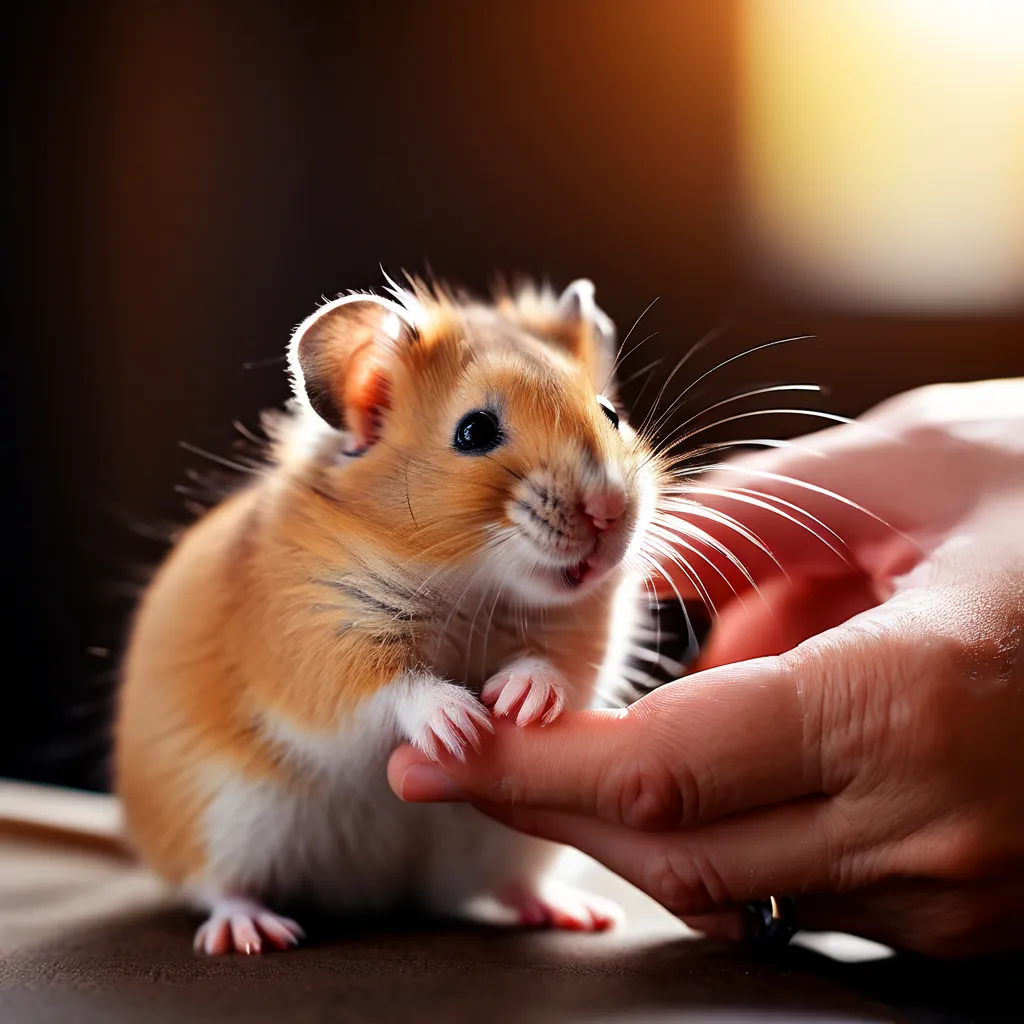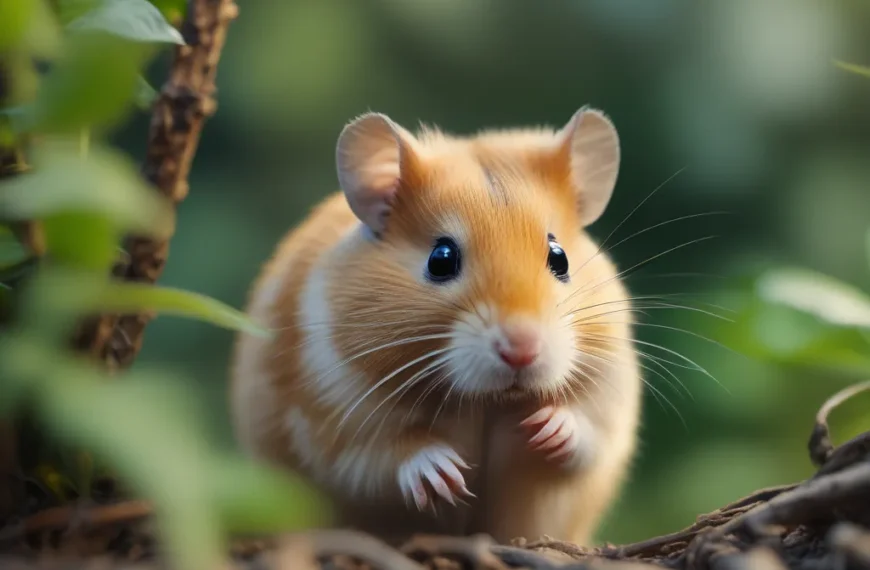Introduction
Choosing the perfect pet hamster often sparks a crucial question: Are male or female hamsters friendlier? This decision goes beyond just picking a pet—it’s about finding a companion that aligns with your lifestyle and personality. Understanding the nuances of hamster friendliness can make all the difference in forming a rewarding bond with your furry friend.
In this guide, we’ll break down what hamster friendliness truly means, introduce key terms related to their behavior, and provide a side-by-side comparison of male and female hamsters. By the end, you’ll have the insights needed to decide which gender suits your preferences and home environment best. Let’s dive into the charming world of hamsters and uncover what makes them such delightful pets!
What Does Hamster Friendliness Entail?
Have you ever wondered what makes a hamster truly friendly? Hamster friendliness isn’t just about their willingness to approach you—it’s a blend of traits like approachability, tolerance for handling, and playfulness. By understanding these behaviors, you can choose a hamster that fits your personality and create a strong, lasting bond with your new pet.
Approachability: A friendly hamster will often show curiosity when you’re nearby. They may come to the front of the cage, stand on their hind legs, or sniff the air, signaling they’re comfortable and interested in you. Conversely, a hamster that hides or retreats may need more time to build trust.
Tolerance for Handling: Handling is a key indicator of friendliness. A hamster comfortable with being held will show little to no signs of stress and might even enjoy the interaction. Gentle, consistent handling is vital to nurturing this trait.
Playfulness: Friendly hamsters are naturally curious and active. From running on their wheel to exploring their toys, these behaviors indicate happiness and health. Engaging in their playtime not only enriches their lives but also strengthens your bond.
Socialization: Regular interaction is the cornerstone of a friendly hamster. Start early with gentle petting, handling, and positive reinforcement to help them feel at ease. Patience is essential—each hamster warms up at its own pace.
Breed Traits: Some hamster breeds are inherently friendlier. Syrian hamsters, for instance, are known for their calm demeanor and thrive on human interaction, while Campbell’s dwarf hamsters are more social within groups. Knowing these breed-specific traits can guide your decision when choosing a pet.
In essence, hamster friendliness boils down to a combination of approachability, tolerance, playfulness, and good socialization. By nurturing these traits and providing a safe, engaging environment, you’ll unlock the delightful personality of your hamster and build a rewarding relationship. Remember, every hamster is unique, with its own personality waiting to shine!
Key Terms Related to Hamster Behavior
Understanding hamster behavior is the key to building a strong and happy bond with your furry companion. By learning these essential terms, you’ll not only navigate their fascinating world but also become more attuned to their needs, ensuring a friendlier and healthier pet.
Socialization: This term refers to how hamsters interact with humans and other animals. A well-socialized hamster is more likely to approach you with curiosity and warmth. Start with gentle handling and positive reinforcement to encourage trust and build a stronger bond.
Territoriality: Hamsters, especially males, are naturally territorial. They may guard their space from perceived intruders, which is important to consider if you plan to house multiple hamsters. Understanding this trait can help you avoid conflicts and ensure a peaceful environment.
Scent Marking: Using scent glands to release pheromones, hamsters mark their territory and recognize others. This behavior, common in males, is a normal part of their communication and territorial instincts.
Nesting: Building a cozy nest is more than just a habit; it’s a vital behavior for your hamster’s comfort and security. Providing ample bedding materials helps them feel safe and relaxed in their environment.
Foraging: Hamsters are natural explorers. Encouraging their foraging instincts by hiding treats or creating fun mazes can stimulate their minds and promote a sense of fulfillment.
Grooming: This self-care behavior keeps your hamster clean and stress-free. Regular grooming signals that your pet feels happy and healthy in their environment.
Playfulness: A playful hamster is an active and content one. Activities like running on a wheel, exploring tunnels, or interacting with toys are all signs of a happy and engaged pet.
Stress Signals: Recognizing signs of stress, such as excessive grooming, hiding, or sudden aggression, is crucial for your hamster’s well-being. By addressing these signals, you can create a more comfortable and welcoming home.
Vocalizations: Hamsters communicate through a range of sounds that indicate their emotions—happiness, fear, or even frustration. Paying attention to these vocalizations will help you better understand their moods and needs.
Hibernation-like State: When temperatures drop, hamsters may enter a hibernation-like state to conserve energy. Keeping their environment warm and consistent ensures they stay healthy and avoid unnecessary stress.
By familiarizing yourself with these key aspects of hamster behavior, you’ll gain invaluable insights into your pet’s emotions and habits. This understanding will not only make your hamster feel more comfortable but also enhance your relationship, fostering a truly rewarding pet ownership experience.
Comparative Analysis of Male and Female Hamsters
When deciding between a male or female hamster, understanding their unique behaviors and traits is essential to finding the right fit for your home. From temperament to friendliness, each gender has its own charm. Let’s explore how male and female hamsters differ and what that means for prospective owners.
Male Hamsters: Laid-Back Companions
Male hamsters are often described as the more relaxed and social option. Known for their laid-back nature, they are less territorial, making them ideal for first-time hamster owners. They enjoy exploring their environment and often greet human interaction with curiosity. Their friendly demeanor and tolerance for handling can make bonding easier, whether you’re cuddling them or letting them roam in a play area.
However, their energetic curiosity can sometimes lead to mischief. Without enough stimulation or space, male hamsters may grow restless. While males tend to get along better in solo cages, housing multiple males still requires caution to avoid occasional disputes.
Female Hamsters: Bold and Independent
Female hamsters are strong-willed and fiercely independent. They often exhibit a more active and territorial nature, particularly at night. While they can be affectionate, they are generally more selective about when and how they interact with humans. Patience is key when handling females, as they may require more time to trust their owner.
Territoriality is a hallmark of female hamsters. They can be aggressive toward other hamsters, especially females, making them less suited for shared housing. On the bright side, their meticulous nesting and grooming habits showcase their intelligence and instinctive drive for organization.
Friendliness and Behavior Comparison
When it comes to friendliness, male hamsters often have the upper hand. They are typically more open to human interaction and easier to bond with. Female hamsters, while still capable of affection, tend to prioritize their independence and may engage less frequently with their owners.
That said, every hamster is unique. Some females may surprise you with their calm and social nature, while some males may lean on the shy side. Early socialization, consistent handling, and a well-designed cage environment are critical in shaping a hamster’s personality, regardless of gender.
Hormonal Influences on Behavior
One critical factor to consider is hormonal behavior. Female hamsters experience hormonal changes during estrus (heat), which can amplify their territorial tendencies and make them more prone to mood swings. Male hamsters, while less prone to hormonal fluctuations, may show changes in behavior based on age, diet, or health. Friendliness depends on both species and gender—find out more.
Conclusion
Choosing between a male or female hamster as a pet is a deeply personal decision shaped by your lifestyle, preferences, and the time you’re willing to invest in bonding. While male hamsters are often praised for their social and laid-back demeanor, female hamsters bring a bold and independent charm that many owners appreciate.
From our analysis, male hamsters generally excel in friendliness and tolerance for handling, making them ideal for those seeking an interactive and affectionate companion. On the other hand, female hamsters, with their strong instincts and territorial tendencies, are perfect for those who appreciate a pet with a spirited personality and don’t mind a bit of extra patience in earning their trust.
It’s important to remember that a hamster’s friendliness is not solely determined by its gender. Factors such as age, early socialization, and the environment you create play a crucial role in shaping their behavior. With love, care, and consistent handling, both male and female hamsters can become wonderful companions.
Ultimately, the best choice is the hamster that resonates with your expectations and the bond you hope to build. Whether you choose a social male or an independent female, the joy of watching their unique personality unfold will be a rewarding experience. Learn how gender influences hamster behavior in our main guide, you can also Explore how genetics affect both lifespan and personality.

















